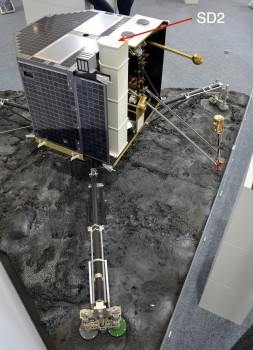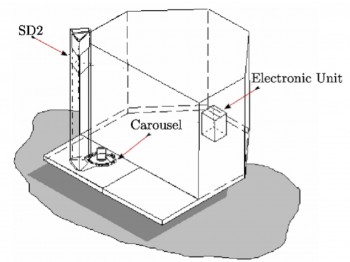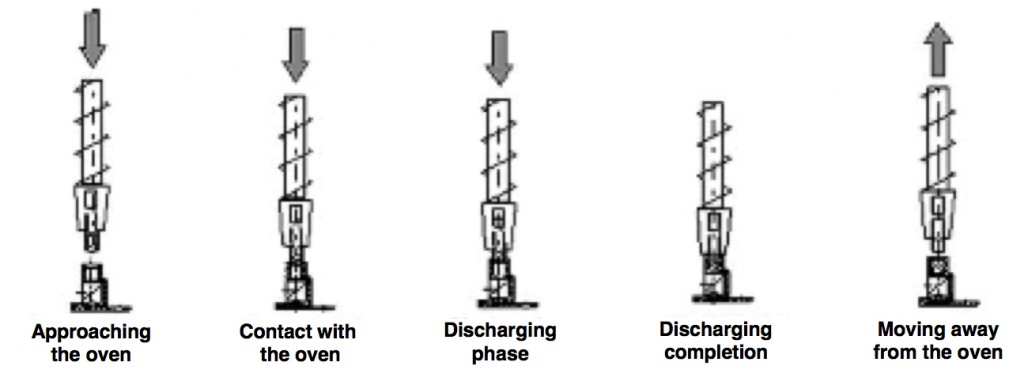By Pierluigi Di Lizia and the SD2 instrument team
When Philae lands on comet 67P/Churyumov-Gerasimenko in November it will analyse ice and dust grains on the surface, and dig up to 23 cm into the comet to ‘taste’ pristine samples hidden below. SD2 – the Sampling, Drilling and Distribution device – will be the one to retrieve the samples, ready for other onboard experiments to study in detail. For example, SD2 will interface with COSAC and PTOLEMY to study the geochemistry of the comet, including hunting for complex organic molecules, and ÇIVA, which will image and study the composition, texture and albedo of the samples collected.
The mechanical unit of SD2 consists of a carbon fiber toolbox, a drill, and a rotating carousel. The average power consumption of SD2 during drilling is about 10 Watts, equivalent to one hundredth of the power consumed by a standard household drill!
The samples are taken from a maximum depth of about 23 cm below the comet’s surface at Philae’s landing site. After the drill reaches the desired depth, a sampling tube is extended from the drill bit to pick up the sample. The drill is then moved back to its home position, ready to deliver the sample to one of Philae’s 26 ovens, which are mounted on the rotating carousel.
Once the drill is at its home position with the sample, the carousel is rotated to put the assigned oven under the drill. The drill moves downward to place the sampling tube on the oven opening and then pushes the sample into the oven. The carousel is then rotated to deliver the sample to the instruments.
Two kinds of ovens are available: 10 medium temperature ovens (maximum temperature: 180°C) and 16 high temperature ovens (maximum temperature: 800°C). By heating the samples to different temperatures, a range of different frozen gases will be released for analysis, enabling the instruments to build up a picture of the comet’s ingredients. The samples retrieved by SD2 will also be used to measure characteristics such as density, texture, strength and thermal properties.












Discussion: 5 comments
Maybe this is the reason the balcony panels were added; to receive enough drilling energy from the sun.
What if the sourface is going to be too hard for the drill?
Is it possible?
Alaska for ever
Unless I have misunderstood, I find it very unlikley that a drill bit could be drilled into the surface unless Philae is anchored or (I guess) somehow jammed in position.Surely the reaction force would push the lander away? Is there an accurate estimate of the weight of the lander? The mass I think is about 100kg. I think I read somewhere that it was less than a packet of crisps.
The mechanical unit of SD2 comprises of a carbon fiber tool stash, a drill, and a pivoting merry go round. The normal force utilization of SD2 amid penetrating is around 10 Watts, proportional to one hundredth of the force devoured by a standard family penetrate!